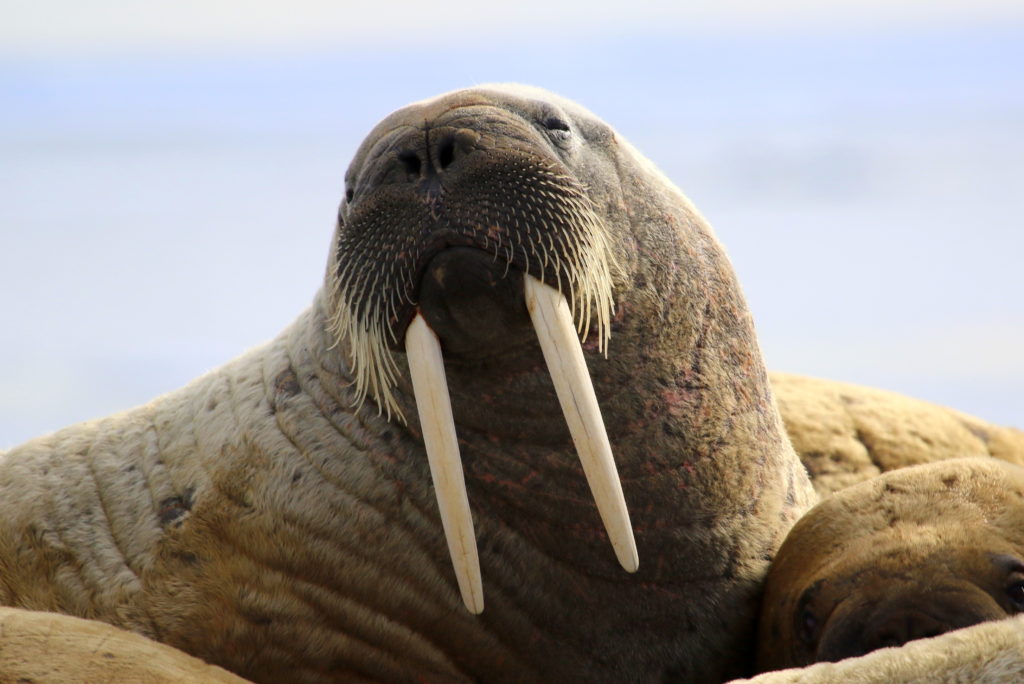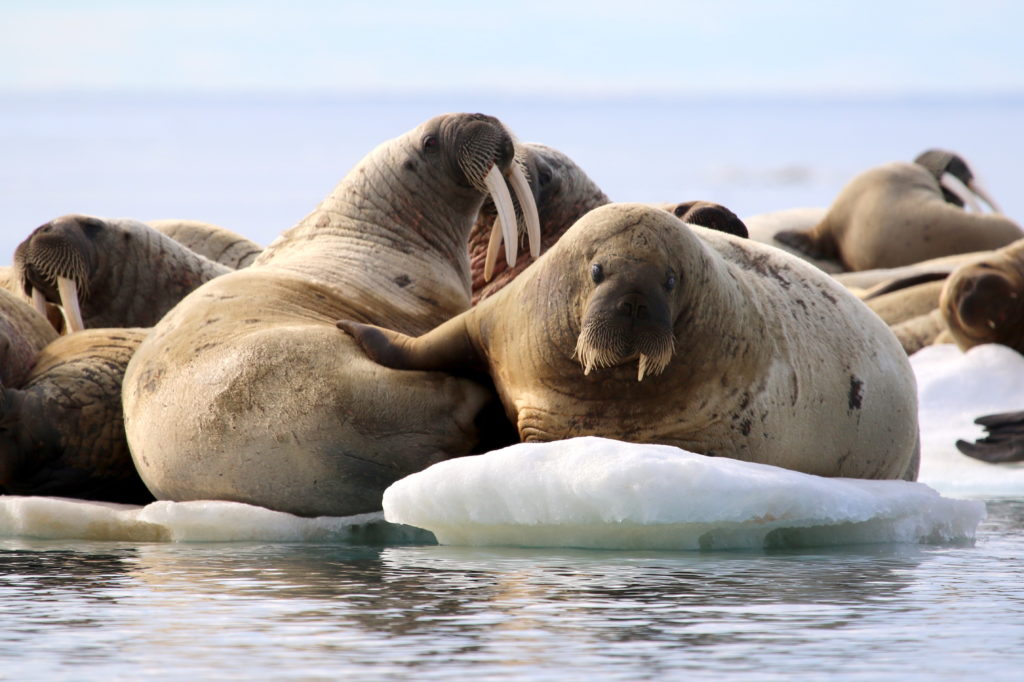Help launch walrus research to the next level — Space!
The beauty of the Atlantic walrus, giant marine mammals weighing about the same as a minivan, is undeniable. But there are just 21,000 walrus remaining in the Canadian Arctic, and the destructive effects of climate change provide the greatest risk to their future.

Walrus are social animals that congregate in groups known as haulouts both on sea ice and on land. They use these critical habitats to socialize, reproduce and rest. But as sea ice melts, walrus are spending more time hauled out on land and in larger groups,” says Brandon Laforest, WWF-Canada senior specialist, Arctic species and ecosystems.
“Less sea ice also means more ships are coming into the Arctic, including near these sensitive areas.”
These developments increase the potential for dangerous stampedes. The loud rumble of a ship can cause walrus to panic and become separated from, or even trample their young, as well as injure themselves and become targets for waiting predators.
“To best protect Canada’s walrus populations,” Laforest adds, “WWF-Canada is working to better understand their haulouts and minimize disturbances to these sites.”
Much of this research and stewardship work is being done through the Arctic Species Conservation Fund. More than 80 total projects have been supported across Canada’s Arctic since it started in 2016, including mapping all known walrus haulouts in Canada, supporting local walrus monitoring efforts and testing walrus for microplastics. We also created Mariner’s Guides to help ships avoid these sensitive haulout areas.

Walrus from space
Using satellite imagery and of the aptly named Walrus Island in northern Hudson Bay, WWF-Canada supported research to determine the feasibility of using satellites to study walrus. The less invasive method is now being used by a WWF and British Antarctic Survey (BAS) citizen-science project called Walrus from Space, which empowers people to help conduct a walrus census from anywhere in the world.
This is not science-fiction. Satellites in space are continuously capturing images of the Earth and by examining these high-resolution images, we can identify, count and later estimate how many walrus there are — even in the remotest parts of their Arctic habitat. Over time, this will show us how they’re being affected by rapid climate change.
Since launching in 2021, over 37,000 people from all over the world have already become “walrus detectives” by spotting and counting walrus in thousands of satellite images. Learn more about how you can join the thousands of others who are contributing.

